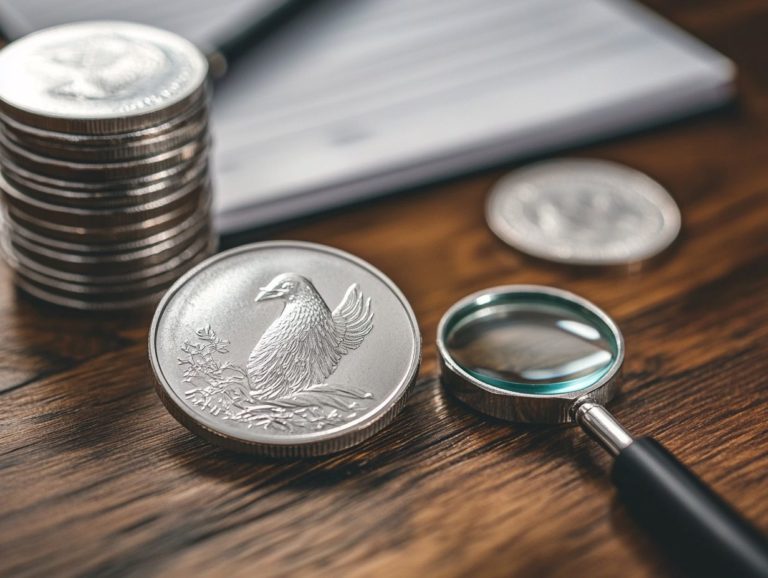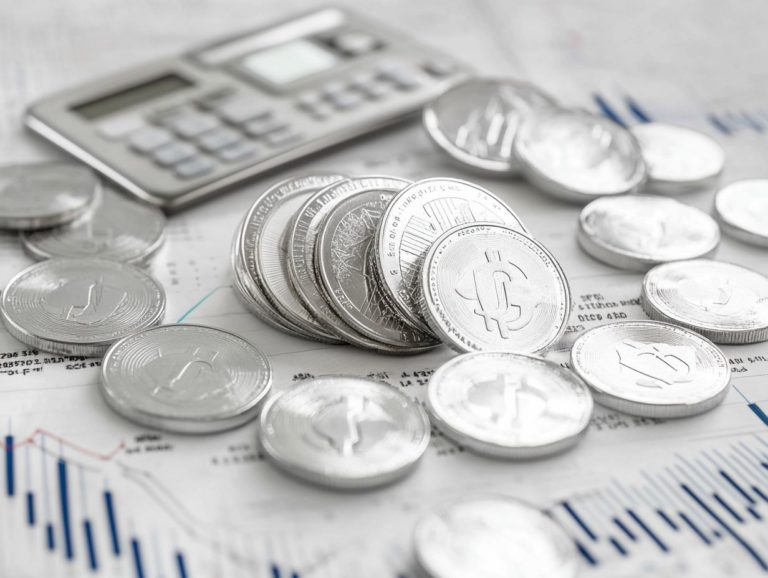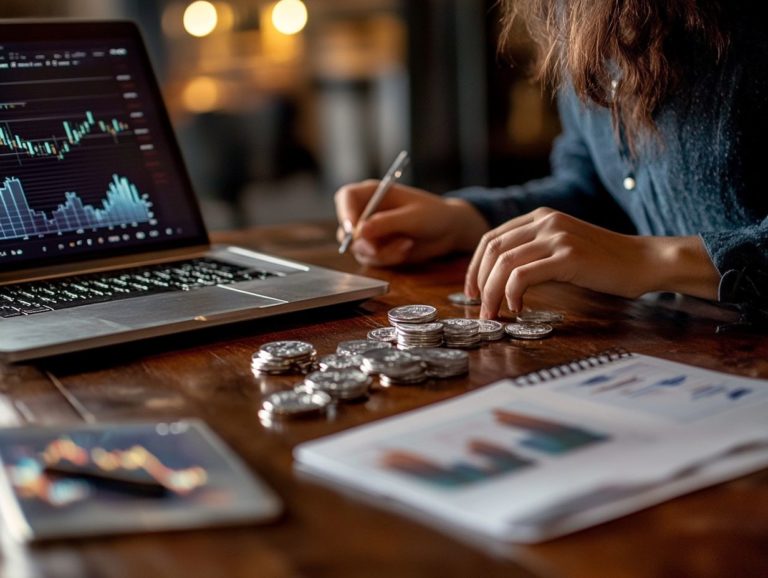What to Know About Silver Price Fluctuations
Silver, often regarded as a precious asset and a safe haven for investors, is characterized by its price volatility.
To navigate the silver market effectively, it’s crucial to understand the many factors influencing silver prices from economic indicators to geopolitical events. This knowledge helps you make informed investment choices.
In this article, you’ll discover historical trends, practical methods for tracking prices, and strategies for investing in silver, while also highlighting potential risks.
Whether you’re a seasoned investor or just beginning your journey, gaining insight into silver’s market dynamics is key to maximizing your returns.
Contents
Key Takeaways:

- Silver prices are influenced by factors like supply and demand, economic conditions, and investor sentiment.
- Historical trends show that silver prices can be very volatile, often affected by major events.
- Using tools like charts and market indexes can help track silver prices and make better decisions.
Understanding Silver Price Fluctuations
Understanding the fluctuations in silver prices is essential for any investor considering silver as a viable option in today s market. This precious metal carries considerable value, serving not only as a commodity for industrial use but also as a strategic hedge against inflation and economic uncertainties.
Many factors, such as supply and demand dynamics, trading volume, and geopolitical events, can sway the price of silver per ounce. Therefore, it’s crucial to remain informed about current market conditions and historical trends to effectively manage your investment portfolio.
What Affects Silver Prices?
Several key factors influence silver prices, including shifts in supply and demand, macroeconomic trends, and changes in investor sentiment.
One crucial aspect is the growing industrial demand for silver, particularly in sectors like renewable energy and advanced technology. This increasing consumption can lead to significant price shifts, especially as nations invest in green technologies that rely on silver for solar panels and batteries.
Geopolitical events also contribute to market fluctuations. Political instability or trade disputes can disrupt supply chains, generating uncertainty for investors. In times of turmoil, silver often emerges as a safe-haven asset, similar to gold.
Historical Trends of Silver Prices
Examining the historical trends of silver prices reveals significant fluctuations shaped by various economic and geopolitical events, offering valuable insights for potential investors.
Years like 1973, 1979, and 1980 stand out with dramatic price movements, often linked to inflation and economic instability. Recently, the spikes in 2021, paired with anticipated developments in 2024, suggest that volatility in the silver market is ongoing.
Grasping these historical price trends is essential for making informed decisions regarding silver investments and navigating future market conditions.
Key Events and Patterns
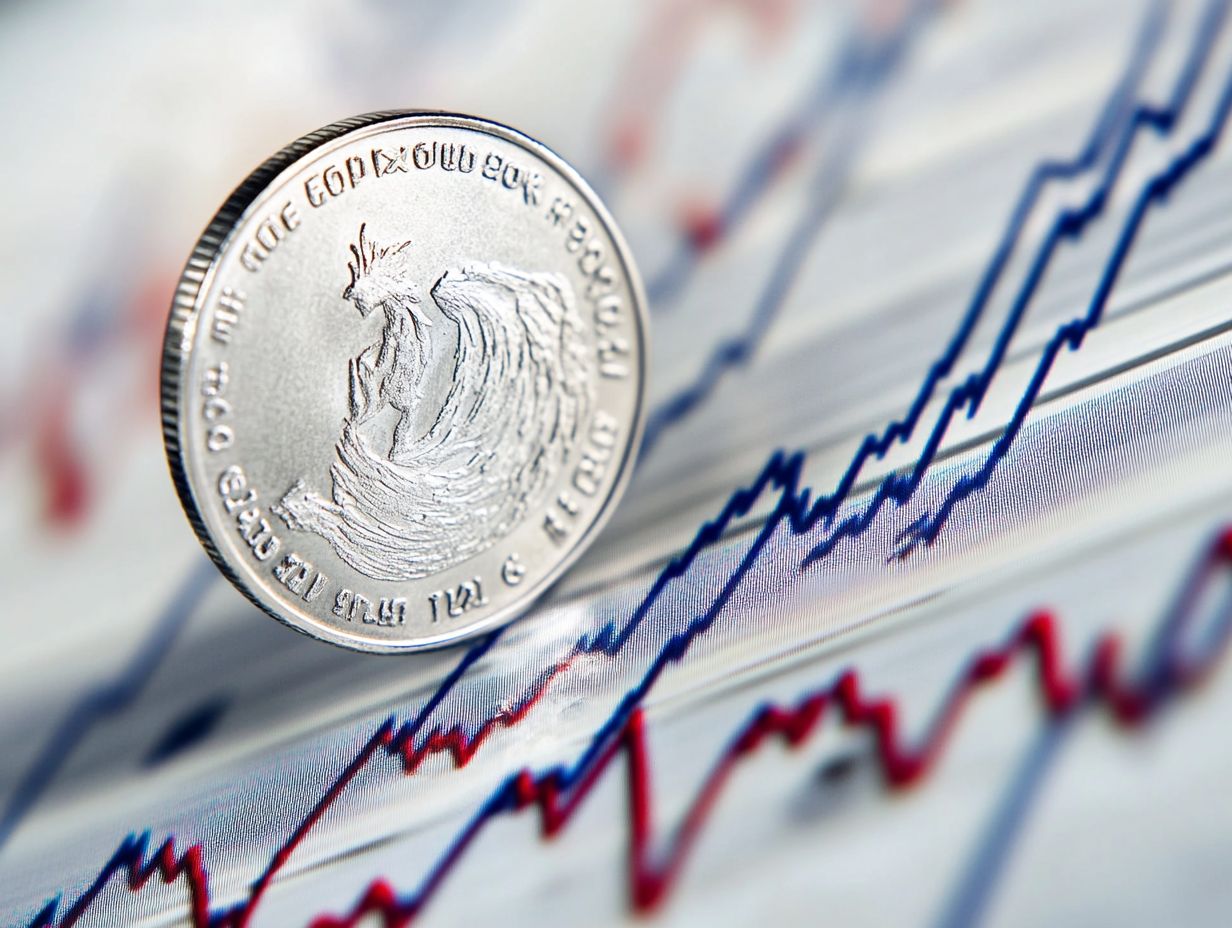
Key events in history have significantly influenced silver price trends, highlighting how external factors can trigger notable market fluctuations.
Take the 2008 financial crisis, for example. It vividly demonstrated how economic downturns can push investors toward precious metals, often resulting in substantial spikes in silver prices as people seek a safe haven.
Advancements in technology especially in renewable energy and electronics have also driven increased demand for silver, showcasing a complex relationship between industrial needs and its market value.
Over the years, geopolitical tensions and changes in mining regulations have added layers of uncertainty, causing silver prices to react sharply to these issues.
By studying these historical patterns, you can better anticipate future movements, enabling you to make well-informed investment decisions.
How to Track Silver Prices
Effectively tracking silver prices involves employing a range of methods and tools that offer real-time data. This ensures you remain well-informed and poised to make timely decisions.
By leveraging financial platforms, market analysis tools, and reputable news sources, you can adeptly monitor fluctuations in silver prices. This allows for a swift response to market trends, trading volume, and investor sentiment.
Learning to use Exchange-Traded Funds (ETFs) can boost your investment strategy and overall performance.
Methods and Tools for Monitoring
You can utilize various methods and tools to monitor silver prices effectively. These include financial news services, real-time trading platforms, and advanced analytical software.
These platforms are equipped with features designed to help you make informed decisions. For example, mobile trading apps often deliver live price alerts, allowing you to respond swiftly to market fluctuations.
Websites like Kitco and SilverSeek provide real-time market data and insightful analyses. This enables you to grasp the broader economic landscape.
Sophisticated charting tools can help you analyze historical trends and forecast potential price movements based on various economic indicators. By using these resources, you’ll gain a competitive edge in the ever-evolving market.
Investing in Silver
Investing in silver can open doors to exciting new opportunities! It allows you to diversify your investment portfolio and explore strategies to maximize returns in a volatile market.
As a precious metal, silver can be acquired in various forms such as bullion, coins, or ETFs. This gives you multiple avenues for investment tailored to your individual risk tolerance and market conditions.
Understanding the intricacies of the silver market, including key supply and demand factors, is essential for navigating investment opportunities and minimizing risks.
Strategies for Maximizing Returns
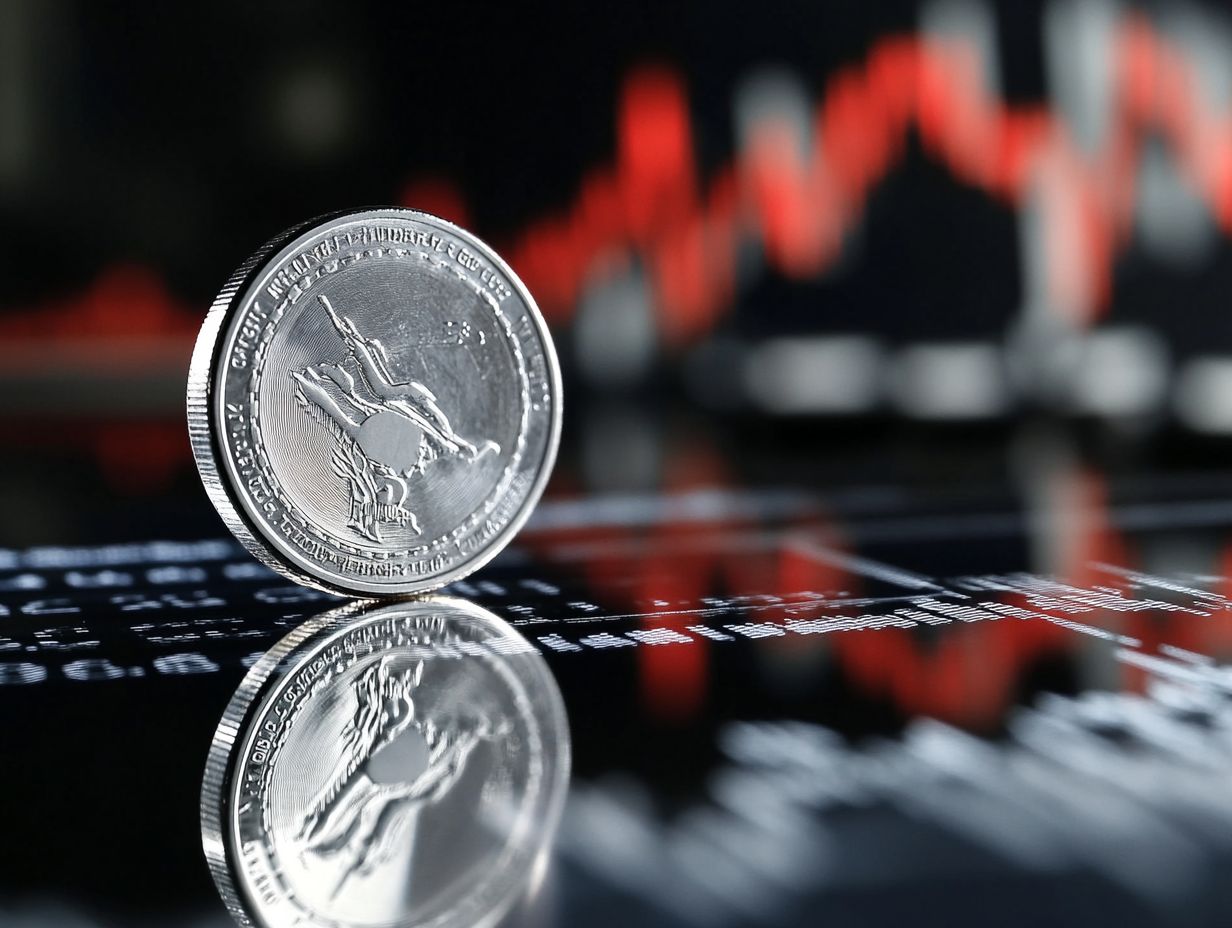
To maximize your returns on silver investments, adopt tailored strategies that align with current market trends and trading volume.
Consider buying during dips; this can provide an excellent entry point, as prices often rebound over time.
Implementing a dollar-cost averaging strategy where you invest a fixed amount regularly can help mitigate risks linked to market volatility.
Diversifying through ETFs offers a layer of security by spreading your investments across a range of silver-related assets. This can help minimize potential losses and enhance your overall portfolio performance in silver trading.
Risks and Considerations
Investing in silver presents inherent risks that you must carefully evaluate to make informed decisions.
Market volatility is a pressing concern, as silver prices can swing dramatically due to factors such as geopolitical tensions, shifts in industrial demand, and economic uncertainty.
During economic downturns, silver, like many assets, can face challenges. Investors may gravitate toward safer havens like gold or cash. This underscores the importance of conducting thorough research before committing to silver investments.
By understanding market trends, historical price movements, and overall sentiment in the commodities market, you can mitigate some of these risks and make more strategic choices in your investment journey.
Frequently Asked Questions
Many people have questions about silver prices. Here are some common ones:
What to Know About Silver Price Fluctuations?
Silver price fluctuations refer to the changes in the value of silver over a period of time. These changes can be influenced by various factors such as supply and demand, economic conditions, and market speculation.
What causes silver price fluctuations?
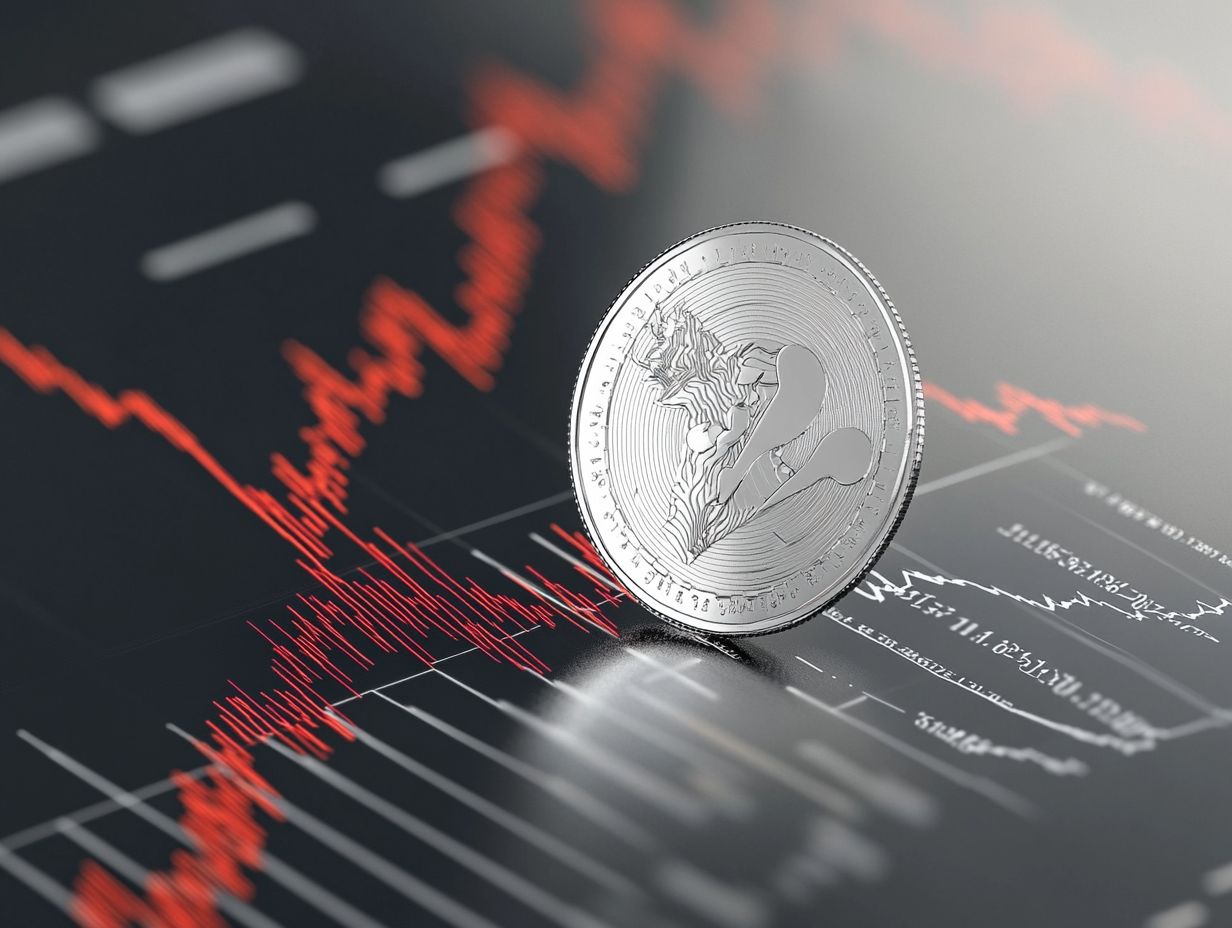
The price of silver is influenced by supply and demand. Changes in production, industrial demand, and investment demand can all impact prices.
How often do silver prices fluctuate?
Silver prices can fluctuate daily. They are influenced by both short-term and long-term factors, and it’s not uncommon for them to experience significant changes during times of economic uncertainty.
How can I track silver price fluctuations?
There are several ways to track silver price fluctuations. You can use online resources, financial news outlets, or invest in silver-specific options like exchange-traded funds (ETFs), which are investment funds traded on stock exchanges.
Is it possible to predict silver price fluctuations?
While it’s impossible to predict with certainty how silver prices will fluctuate in the future, certain trends and indicators can help. Conducting thorough research and consulting with a financial advisor is crucial before making investment decisions.
How can I protect myself from silver price fluctuations?
Investors can shield themselves from silver price swings by diversifying their portfolios! Spreading investments across various assets helps reduce potential losses during major price drops.










